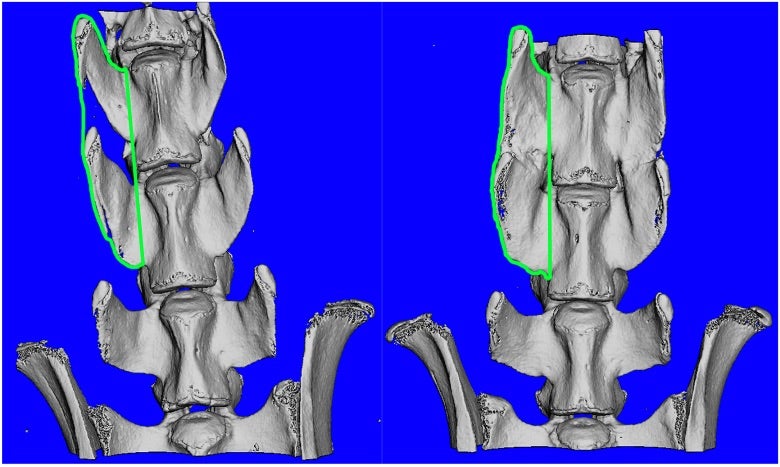Forming More Bone with Less BMP2 Growth Factor

The growth factor BMP2 is used clinically to help form bone in difficult surgeries such as spinal fusions and fracture non-unions. In these surgeries, BMP2 is effective when used at milligram doses. However, this is roughly a million-fold more BMP2 than occurs naturally, and such great doses can lead to undesired side-effects. Clearly we need to better understand how BMP2 works and overcome this discrepancy in activities.
It’s been long known that extracellular matrix can affect the cellular responses to growth factors. But exactly how and why this occurs still remains elusive, especially for BMP2. One mechanism might be by increasing the local concentration of the growth factor presented to the cells. We previously showed that COMP is an extracellular matrix protein that can bind up to ten BMP2 or TGFbeta growth factors. This multivalent binding of BMP2 to COMP enhances the biological activity of BMP2. Here we apply this finding to a rat model of spinal fusion, and show that we can achieve an equivalent bone-inducing activity with a reduced amount of BMP2.
This study was published in the journal “Spine“. It represents a collaborative effort involving basic and clinical scientists at the UC Davis Department of Orthopaedic Surgery, and biomaterials researchers at the UC Davis Department of Biomedical Engineering.
